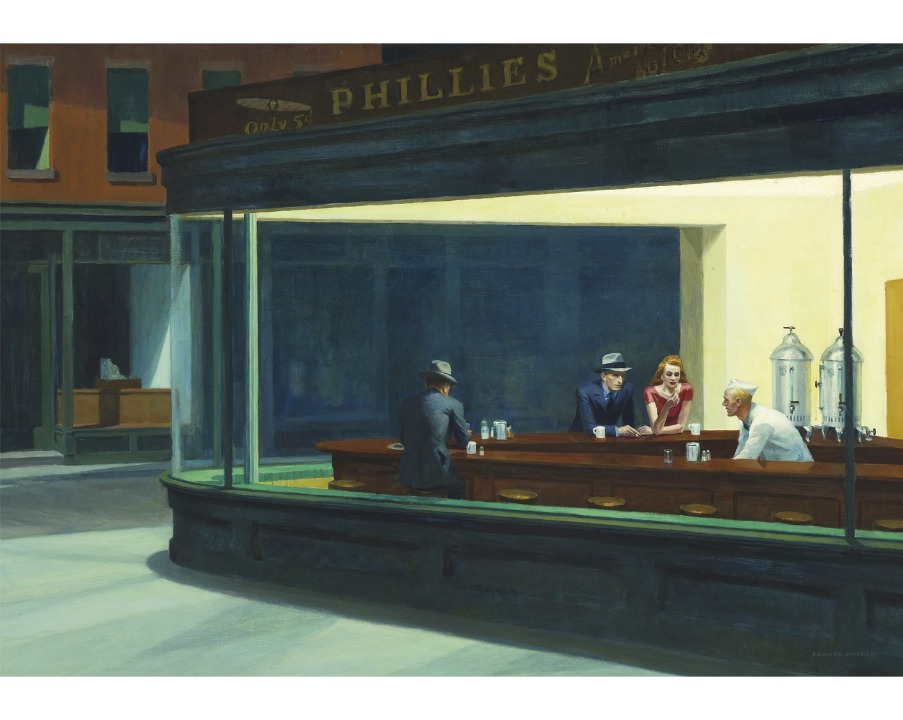The beauty and the beast of studying the arts is that its greatest strength is also its Achilles heel. Art appeals to us for the aesthetic response it creates and for the manner in which it speaks universal messages to us. We can appreciate tone, mood and thematic ideas often, as Berthold Brecht would have said, by being hypnotised at a human level by individual characters and plights. But why is it that, when we discuss plot, characters and themes, we don't produce good analysis?
What is Analysis & Evaluation?
What can we learn about the world through the arts, in this case the literary arts? How is one person's individual and unashamedly fictional story evidence of any broader idea, experience or universal truth? And how should we analyse and evaluate a literary work?
Consider this scenario. I walk into the Art Institute of Chicago and see this work:
An engaged and interested student, considering thematic impact and aesthetic response, may respond to this painting as follows:
A slightly more thoughtful and developed response may begin to engage with other aspects:
However, even with this level of interpretative skill, we're still talking about plot, characters and themes. A student of Visual Arts, one would hope, may drew the same interpretative effects, but be able as well to discuss how the following techniques create those effects:
- The use of oil on canvas;
- The specific method of light and perspective;
- The heritage and evolution of artistic movements and genres, and how these influence style and effect.
Your turn: Have a go at writing a paragraph using the ideas above.
Paper 2
Returning to literature, the challenge of the literary arts is to disentagle our empathy with characters with whom we've connected, to view them and everything else in the work as a construction. While these characters and the plots they inhabit drew us in - Stalin wasn't the first to recognise that stories had more power to influence than statistics - we must step away in the anaytical and evaluative process and comment, instead, on the choices made and how they create the thematic and aesthetic effects we've identified.
Criterion B:
- To what extent does the candidate analyse and evaluate how the choices of language, technique and style, and / or broader authorial choices, shape meaning?
- How effectively does the candidate use analysis and evaluation skills to compare and contrast both works?
In our Edward Hopper example, the first response was okay, the second quite good. Indeed, for Understanding and Interpretation of the Work(s) - Criterion A - the latter may have scored highly in the criterion (out of ten marks). But it was the third offering that did the best; only this one would have gained credit in Criterion B since it was the one that identified and evaluated the effect of the techniques of that particular artistic genre.
And so the same must apply to the literary works and the features of prose, and / or drama, and / or poetry.
How much of Paper 2 - Analysis and Evaluation have you understood?



 Edward Hopper, Nighthawks (1942). Art Institute of Chicago
Edward Hopper, Nighthawks (1942). Art Institute of Chicago Twitter
Twitter  Facebook
Facebook  LinkedIn
LinkedIn